Effects of steam disinfection pipe structure parameters on the heating efficiency of red loam steam disinfection
-
摘要:
为解决云南红壤蒸汽消毒过程中消毒加热效率低的问题,开展了消毒管结构参数对土壤消毒加热效率的影响效应研究,并对消毒管结构参数进行了优化设计。首先,运用图像处理技术构建出土壤孔隙结构离散模型;其次,对消毒管内蒸汽流场土壤蒸汽消毒过程进行了仿真模拟分析;最后,基于土壤蒸汽消毒试验平台,开展了多因素消毒管结构参数优化试验研究。研究结果表明:1)消毒管出气孔周向和轴向孔数对红壤蒸汽消毒加热效率影响极显著(P<0.01);消毒管最佳结构参数为出气孔孔径2 mm、周向孔数为3个、轴向孔数为2个,土壤平均温度达到80 ℃时的试验消毒时长平均值为394 s,试验结果与预测结果之间的平均误差率为5.3%;2)消毒200 s时,各处理土壤升温速率达到峰值,消毒200 s后加热效率逐渐降低,即消毒200 s时应逐渐减少蒸汽的流量,当土壤温度低于60 ℃需再次增加蒸汽的流量,依次循环往复保证土壤温度始终在60 ℃以上,以达到高效灭菌的目的;3)单管红壤高温区域范围主要集中在水平方向0~150 mm,垂直方向0~200 mm。该研究可为土壤蒸汽消毒机消毒管的结构设计和智能消毒作业提供理论依据,并为末端执行装置多管间距的设计奠定理论基础。
Abstract:Soil continuous cropping has been an ever-increasingly serious threat to modern agriculture in recent years. The soil disinfection method can be expected to effectively alleviate the soil's continuous cropping. Furthermore, the soil steam disinfection can be sown in a short period of time after disinfection, due to the non-toxic, pollution-free, compared with the chemical methods. But the low disinfection and heating efficiency has been limited in the process of red loam steam disinfection in practice. In this study, the disinfection pipe structural parameters were optimized to clarify the influence on the soil disinfection heating efficiency. Firstly, image processing was used to construct a soil pore structure discrete model. Secondly, the simulation was implemented to analyze the steam flow field in the disinfection pipe and the single-factor soil steam disinfection. Finally, the experiment was performed on the optimized structural parameters of multi-factor disinfection pipes using the soil vapor disinfection test platform. The results show that: 1) The circumferential and axial outlets of the disinfection pipe posed a significant effect on the heating efficiency of steam disinfection (P<0.01). The optimal structural parameters of the disinfection pipe were achieved: 2 mm pore size of the outlet pore, 3 circumferential pores, 2 axial pores. The average disinfection duration of the test when the average soil temperature reaches 80 ℃ is 394 s, and the average error rate between the test results and the predicted results is 5.3%; 2) The soil heating rates of each treatment reached the peak when the steam disinfection was carried out for 200 s. The efficiency of disinfection and heating gradually decreased after 200 s of disinfection. Future practical operations need to be guided by the variation of soil heating rate. Specifically, the steam valve should be gradually closed, the steam flow should be suspended, and the excess water in the soil should be removed to provide the soil pore permeability when the heating rate decreased gradually. Therefore, an intelligent control system can be expected to be combined, when conducting steam disinfection operations on Yunnan red loam in the later stage. The steam flow rate should be gradually reduced when disinfecting for 200 s. The soil temperature was redistributed and gradually decreased, as time increased. Once the soil temperature was below 60 ℃, the steam flow rate should be increased again, and the flow rate should be reduced and increased in a cyclic manner to ensure that the soil temperature was always above 60 ℃, in order to achieve the goal of efficient disinfection. The findings can provide a theoretical basis for efficient disinfection operations. 3) The range of single-pipe high-temperature areas in each treatment was mainly concentrated in the horizontal direction 0-150 mm and the vertical direction 0-200 mm. This study can provide a theoretical basis for the structural design of the disinfection pipes in the steam sterilizers and the intelligent disinfection operation, and lay a theoretical research foundation for the design of multi-pipe spacing of end actuators
-
Keywords:
- soils /
- disinfection /
- image processing /
- steam disinfection pipe /
- structural parameters /
- heating efficiency /
- simulation /
- temperature field
-
0. 引 言
近年来,土壤连作障碍问题越发严重,特别是根茎类药用植物,如云南三七、天麻等。土壤蒸汽消毒技术是解决连作障碍问题的有效手段之一,该技术通过将高温蒸汽通入土壤中,使土壤逐渐升温,从而杀灭土壤中有害真菌、细菌等[1-4]。已有学者研究得出,当土壤温度达到60~80 ℃且保持30 min,即可杀灭土壤中大多数有害真菌、细菌和昆虫等[1-4]。
注入式蒸汽消毒法属于常见的物理消毒方法[3],即蒸汽借助消毒管通入深层土壤中进行高温杀菌。在国外,GAY等[5]在沙壤土中开展了注入式蒸汽消毒试验,选取了空心圆柱铁管作为消毒管,该消毒管的壁厚为2 mm,直径为21 mm,长度为250 mm,试验表明当消毒时长为8 min时,可使层深160 mm的土壤温度达到80 ℃;MICHELE等[6]在GAY等的基础上,改进设计了一种带式蒸汽消毒机,该消毒机可以使层深25 mm处的土壤温度达到63 ℃。在国内,许永福等[7]设计了一款刺罩式土壤蒸汽消毒机,刺罩内布置了20个管径为40 mm、长度为320 mm的针刺,采用该装置开展了不同病原菌和作物种子的蒸汽消毒试验,试验表明土壤温度达到80 ℃且保温20 min后可起到有效消毒杀菌的作用;王凤花等[8]开展了沙壤土条件环境下,蒸气消毒针结构的优化研究,结果表明优化后的消毒管能在10 min内将层深15~20 cm的土壤加热至90 ℃,满足三七作物的农艺要求。
由以上研究可知,蒸汽消毒机末端与土壤直接作用的消毒管是决定蒸汽热质传递的关键通路,而其结构参数是影响这一通路热传导有效性的关键因素。然而,以上学者并未针对云南红壤土质特性,开展基于特定土壤孔隙结构的土壤消毒加热效率研究,也未从消毒管周(轴)向等结构参数更深入评测蒸汽消毒加热效率。基于此,本文首先针对云南红壤土,利用图像处理技术建立真实土壤孔隙结构模型;其次,仿真模拟了消毒管内部流场和土壤蒸汽消毒过程;最后,以土壤平均温度达到80 ℃的时间为评价指标,开展多因素土壤蒸汽消毒试验,优化最佳消毒管结构参数(即孔径、轴向和轴向孔数等),以期为解决土壤连作障碍问题提供有效技术方案,并为智能土壤蒸汽消毒装备研制提供理论指导。
1. 云南红壤土模型构建
1.1 试验材料与装置
供试云南红壤土采自云南农业大学后山试验基地(东经102°45′5′′,北纬25°8′7′′)。土壤耕作会产生大小不一的土壤团聚体,进而形成不同的土壤孔隙结构。一般蒸汽消毒前需要对连作产生的板结土壤进行精细旋耕,旋耕作业后大约有50%的土壤团聚体粒径小于2 mm[9],同时为保证相同试验条件,故需对土壤试样过2 mm筛备用[9],其物理参数如表1所示[10]。
表 1 土壤物理特性参数Table 1. Parameters of soil physical properties参数 Parameter 数值 Value 土壤容重 Soil bulk density/(kg·m−3) 867 土壤初始含水率 Initial soil water content/% 20 土壤孔隙率 Soil porosity/% 17 土壤导热系数
Soil thermal conductivity/(W·(m·°C)−1)1.3 黏粒 Clay (<0.002 mm) /% 39.47 粉粒 Slit (0.002~0.02 mm) /% 35.32 砂粒 Sand (>0.02~2 mm) /% 25.21 图像采集平台由工业相机、光源、透明土槽、升降台、相机支架和电脑等组成,如图1所示。
1.2 试验方法
土壤由土壤颗粒、团聚体和孔隙组成,为还原真实的土壤团聚体和孔隙结构[11-12],需要将连续土壤模型进行离散化处理。采用矢量化处理方法对土壤试样切片进行处理,根据前期学者的研究[9],构建出长×宽为200 mm×200 mm的土壤切片模型。具体方法是将土壤样品填充在透明土槽(240 mm×240 mm×240 mm)中,借助图像采集系统获取土壤垂直切片图;运用图像处理技术对切片图进行标定、二值化、降噪、腐蚀膨胀和分水岭分割处理[13-15]。
1.3 试验结果
整体土壤建模过程如图2所示,土壤原始图像标定后为图2a,离散处理后的土壤切片见图2b。
将图2a进行图像处理后转换为矢量图形(图2b)并进行优化编辑[16-17],图2b中土壤孔隙为有色区域,土壤团聚体为白色区域。本试验构建的真实土壤孔隙结构模型为后续蒸汽消毒传热模拟奠定基础。
2. 蒸汽消毒管的设计
2.1 蒸汽消毒管的结构参数
消毒管选用抗压强度高、耐高温和耐腐蚀的20无缝钢[18-19]。由土壤耕作层深0~200 mm[20]可知,消毒管的长度应大于200 mm,本文选用长250 mm、壁厚2 mm[8]、内径16 mm的消毒管。为保证消毒时蒸汽均匀扩散,出气孔的位置按照均布原则进行轴(周)向布置,消毒管结构参数示意如图3所示。
![]() 图 3 消毒管结构参数示意图注:La为轴向孔间距,mm;l1为螺纹连接段长度,mm;l2为轴向第1个出气孔距离消毒管底端的距离,mm。Figure 3. Schematic diagram of the disinfection pipeNote: La is the axial outlet spacing, mm; l1 is the length of the threaded connection section, mm; l2 is the distance between the first axial outlet and the bottom of the disinfection pipe, mm.
图 3 消毒管结构参数示意图注:La为轴向孔间距,mm;l1为螺纹连接段长度,mm;l2为轴向第1个出气孔距离消毒管底端的距离,mm。Figure 3. Schematic diagram of the disinfection pipeNote: La is the axial outlet spacing, mm; l1 is the length of the threaded connection section, mm; l2 is the distance between the first axial outlet and the bottom of the disinfection pipe, mm.图3中消毒管主要结构参数表达式为
$$ {L_a} = \frac{{250 - {l_1} - {l_2}}}{{{n_a}}} $$ (1) $$ {\alpha _c} = \frac{{360^\circ }}{{{n_c}}} $$ (2) 式中La为轴向孔间距,mm;l1为螺纹连接段长度,mm;l2为轴向第1个出气孔距离消毒管底端的距离,mm;na为沿X轴向孔数;ɑc为周向孔间角,rad;nc为绕X轴周向孔数。设定l1=30 mm,l2=20 mm,na和nc取值均为1、2、3和4。
2.2 蒸汽消毒管的压力校核
选用杭州句红得公司生产的型号为LDR0.004-0.7蒸汽锅炉(额定蒸发量为4 kg/h、额定温度为171 ℃、最大压力 0.7 MPa)。通过钢管承受压力计算式(3)[18],可计算得到该消毒管的承受压力为10.25 MPa,远大于蒸汽锅炉的最大压力,故该钢管承受压力符合条件。
$$ p = \frac{{c \cdot 2 \cdot {\sigma _m}}}{{D \cdot S}} $$ (3) 式中p为消毒管承受的压力,Pa;c为壁厚,mm;σm为20无缝钢抗拉强度,MPa;D为消毒管的外径,mm;S为安全系数,当外部压力小于7 MPa时取值为8。
3. 单因素土壤蒸汽消毒仿真试验
3.1 仿真模型结构参数的设置
参照前人研究[8-9]和注入式蒸汽消毒特点,为保证蒸汽充分对土壤深层进行加热,选取消毒管出气孔孔径、周向孔数、轴向孔数为试验因素,每个因素取4个水平(即出气孔孔径分别取1、2、3和4 mm;周向孔数分别取1、2、3和4个;轴向孔数分别取1、2、3和4个),每个水平的轴向孔间距和周向孔间角具体参数见图3。
3.2 数值模拟计算
在真实土壤孔隙结构建模基础上,建立土壤蒸汽消毒模型,如图4所示。
选定蒸汽锅炉的压力为0.2 MPa,将蒸汽的流量调至为2 kg/h时,根据流速公式[21](4)计算求得消毒管入口速度2.5 m/s;蒸汽压力0.2 MPa对应的蒸汽温度为120 ℃[22]。根据土壤孔隙结构的复杂性和蒸汽状态,物理模型选用湍流模型[23-24]。
$$ V = \frac{Q}{{3600 \cdot \rho \cdot \pi {{\left( {\dfrac{d}{2}} \right)}^2}}} $$ (4) 式中V为蒸汽的流速,m/s;Q为蒸汽的流量,kg/h;ρ为蒸汽的密度,kg/m3;d消毒管的内径,m。
由于土壤切片模型中土壤团聚体的形状大小不一,划分网格时选用自由三角形网格法,网格顶点数量为
395744 ,单元数790453 个。整个土壤升温过程中主要为热传导和对流传热[25],土壤表面设为隔热层。采用Philip和De Vries多孔介质传热方程[9]对土壤温度场进行数值模拟,传热方程见表达式(5)和(6),仿真模拟参数见表2。
表 2 仿真模拟参数Table 2. Simulation parameters仿真参数
Simulation parameters初始条件
Initial condition入口速度 Inlet velocity/(m·s−1) 2.5 出口压力 Outlet pressure/Pa 101325 土壤初始温度 Soil initial temperature/°C 20 蒸汽温度 Steam temperature/°C 120 蒸汽密度 Steam density/(kg·m−3) 1.12 动力黏度 Dynamic viscosity/(Pa∙s) 1.28×10−5 $$ {(\rho {C_p})}\frac{{\partial T}}{{\partial t}} + \rho {C_p} \cdot u \cdot \nabla T + \nabla \cdot q = Q_e$$ (5) $$ {(\rho {C_p})} = {\theta _p}{\rho _p}{C_{\rho ,p}} + (1 - {\theta _p})\rho {C_p} $$ (6) 式中Cp为流体比热容,J/(kg·K);ρp为土粒密度,kg/m3;Cρ,p为土粒比热容,J/(kg·℃);T为绝对温度,K;u为速度场,m/s;q为传导热通量,W/m2;▽为梯度算子;Qe为额外的热源,W/m3;θp为土壤团聚体体积分数;1−θp为土壤孔隙度。
3.3 仿真结果分析
3.3.1 消毒管内部及出气孔处流场模拟分析
消毒管内部及出气孔处的速度场分布如图5所示。由图5可知,出气孔孔径1 mm处理的最大流速可达到21.42 m/s(图5a),出气孔孔径4 mm处理的最大流速仅为4.66 m/s(图5d),即随着出气孔孔径的增大,蒸汽流速逐渐减小;管内和4个出气孔处的流速大小分布变化不大。
3.3.2 不同消毒管结构参数仿真模拟分析
结合消毒管内部流场分析,进一步对土壤蒸汽消毒过程进行单因素仿真模拟。根据前期学者的研究,大多数病菌、害虫和杂草种子杀灭温度在60~80 ℃[11-12],本研究中,设定土壤温度达到80 ℃为消毒温度目标。
对不同出气孔孔径仿真模拟试验进行分析可知(表3),在周向和轴向孔数为1的条件下,随着出气孔孔径的增大,消毒时长逐渐增加;出气孔孔径为1 mm的处理所用的消毒时间最短,时间为450 s;出气孔孔径为4 mm的处理用时最长,时间为807 s;对不同周向孔数仿真模型进行分析可知(表3),在出气孔孔径为1 mm和轴向孔数为1的条件下,随着周向孔数的增加,消毒时长先减小后增加;当周向孔数为2时,消毒用时最短,时间为364 s。对不同轴向孔数仿真模拟进行分析可知(表3),在出气孔孔径为1 mm和周向孔数为2的条件下,随着轴向孔数的增加,消毒时长先减小后增加;当轴向孔数为3时,消毒用时最短,时间为416 s;当轴向孔数为1时,消毒用时最长,时间为510 s。
表 3 消毒管结构参数与消毒时间关系Table 3. Relationship between structural parameters of disinfection pipe and disinfection time试验因素
Test factors取值
Value消毒时间
Disinfection time/s出气孔孔径
Steam outlet aperture/mm1 450 2 470 3 756 4 807 周向孔数
Number of
circumferential outlets1 450 2 364 3 380 4 411 轴向孔数
Number of axial outlets1 364 2 388 3 349 4 442 以总体平均温度上升到80 ℃对应的消毒时间为指标,根据以上孔径、周向和轴向孔数3个因素水平的仿真模拟可知,孔径越小土壤升温时间越短,因此选择1 、2 和3 mm作为多因素的水平区间;周向孔数为2时消毒所需时间最短,前后两个水平所需要的时间都高,因此,取水平区间1、2、3;同理,轴向孔数为3时消毒所需时间最短,故轴向孔个数的水平区间取2、3、4。
通过上述消毒管结构参数与消毒时间分析,首先选择出气孔孔径为1 mm时的温度场分布进一步分析。从图6a~6d可以看出,蒸汽在垂直方向上的扩散速度大于水平方向的扩散速度,温度场主要呈1/4椭圆形向外扩散;消毒后期(图6d),土壤高温区(80 ℃以上)的范围主要集中在垂直方向0~−200 mm,水平方向0~150 mm。
![]() 图 6 单因素各处理对应的温度场分布注:30 °C 出气孔孔径1 mm代表出气孔孔径为1 mm处理组对应的土壤平均温度为30 °C,以此类推。水平距离为X轴方向。Figure 6. Temperature field distribution corresponding to each treatment of single factorNote: The image name is 30 °C, and the pore size of the outlet is 1 mm, indicating that the average soil temperature corresponding to the treatment group with a pore size of 1 mm is 30 °C, and so on. The horizontal distance is in the X direction.
图 6 单因素各处理对应的温度场分布注:30 °C 出气孔孔径1 mm代表出气孔孔径为1 mm处理组对应的土壤平均温度为30 °C,以此类推。水平距离为X轴方向。Figure 6. Temperature field distribution corresponding to each treatment of single factorNote: The image name is 30 °C, and the pore size of the outlet is 1 mm, indicating that the average soil temperature corresponding to the treatment group with a pore size of 1 mm is 30 °C, and so on. The horizontal distance is in the X direction.然后,选择周向孔数为2时的温度场分布进行分析,如图6e~6h所示。由图可以看出,温度场主要以消毒管为中心呈圆形向外扩散;消毒开始时(图6e),靠近消毒管处的温度最高可达93.1 ℃,此时温度场分布范围较小,随着消毒时间的增加,温度场呈圆形分布且充满整个消毒区域,最高温度可达96.5 ℃(图6h)。最后,选择轴向孔数为3时的温度场分布进行分析,如图6i~6l所示。从图中可以看出,消毒开始时,蒸汽分别从轴向3个出气孔喷出,水平范围为0~50 mm;随着时间的增加,轴向3个出气孔处的温度场重合,温度场分布范围为垂直方向0~−200 mm、水平方向0~150 mm,温度场主要呈长方形均匀向外扩散(图6l)。
4. 多因素土壤蒸汽消毒试验
4.1 材料与方法
4.1.1 供试材料
供试土壤为云南红壤土,土壤处理方法和物理特性参数与1.1节一致。土壤蒸汽消毒平台由消毒管、0.004-0.7型号蒸汽发生装置(杭州句红得科技有限公司)、软管、土壤温度控制箱、PT100土壤温度传感器(济南正妙自动化设备有限公司)、SR20 PLC(西门子)和 TPC7062Ti 显示屏、球阀开关和透明土槽(240 mm×240 mm×240 mm)等组成,如图7所示。
4.1.2 试验方法
参考单因素土壤温度场分布图,将温度传感器的按照水平和垂直两个方向布置,具体布设方式如图8所示。使用Surfer 12软件绘制土壤温度垂直剖面图,从垂直剖面图可以得到各土壤温度区段的分布位置。
为了确定消毒管出气孔最优结构参数组合,以土壤总体平均温度达到80 ℃时对应的消毒时间(Y)为试验指标。根据单因素仿真试验结果,以出气孔孔径(A)、周向孔数(B)和轴向孔数(C)为自变量,各因素和水平见表4。
表 4 试验因素和水平Table 4. Experimental factors and levels水平
Level出气孔孔径
Outlet diameter
A/mm周向孔数
Number of circumferential
outlet B轴向孔数
Number of
axial outlet C1 1 1 2 2 2 2 3 3 3 3 4 4.1.3 土壤升温速率、变异系数的计算
土壤升温速率是反映土壤升温速度快慢的指标,土壤升温速率的计算式(7)为
$$ {v_T} = \dfrac{{\Delta T}}{{\Delta t}} $$ (7) 式中$ {v}_{T} $为土壤温升速率,℃/s;$ \Delta T $为土壤温度变化,℃;Δt为土壤温度变化$ \Delta T $所用的时间,s。
土壤温度变异系数可以衡量土壤温度分布的均匀性,变异系数越小变异程度越小,土壤温度的分布均匀性越好,土壤温度变异系数的计算式(8)为
$$ {c_{vt}} = \dfrac{{{D_s}}}{{{M_N}}} $$ (8) 式中cvt为土壤温度变异系数;Ds为土壤温度标准偏差,MN为土壤平均温度,℃。
4.2 结果与分析
4.2.1 基于Box-Behnken试验结果与分析
结合表4,以消毒时间(Y)为响应值,以出气孔孔径(A)、周向孔数(B)和轴向孔数(C)为自变量,进行三因素三水平的正交试验,试验方案和结果见表5。试验开始前需排除消毒管中的蒸汽冷凝水,试验时先将蒸汽发生装置的压力调节至0.2 MPa,根据式(4),将消毒管入口初始流速调节至2.5 m/s;温度采集间隔为10 s,3次重复,取平均值作为试验结果。
表 5 试验方案与结果Table 5. Test scheme and results试验号Test No. A/mm B C 消毒时间Disinfection time Y/s 1 1 1 3 483 2 3 1 3 460 3 1 3 3 390 4 3 3 3 452 5 1 2 2 395 6 3 2 2 415 7 1 2 4 470 8 3 2 4 485 9 2 1 2 510 10 2 3 2 380 11 2 1 4 520 12 2 3 4 495 13 2 2 3 465 14 2 2 3 470 15 2 2 3 489 16 2 2 3 490 17 2 2 3 480 从表6可知,周向孔数B和轴向孔数C对消毒时间具有极显著性影响(P<0.01),出气孔孔径A影响不显著(P>0.05);交互项中的AB、BC影响显著(P<0.01)。通过F值的分析可知,轴向孔数C对消毒时间的影响大于周向孔数B。
表 6 试验模型方差分析Table 6. ANOVA of the experimental model方差来源
Source of
variance平方和
Sum of
squares自由度
Freedom均方
Mean
squaeF值
F valueP值
P value模型
Model27494.23 9 3054.91 23.36 0.002** A 684.50 1 684.50 5.23 0.0560 B 8192.00 1 8192.00 62.65 < 0.0001 **C 9112.50 1 9112.50 69.69 < 0.0001 **AB 1806.25 1 1806.25 13.81 0.0075 **AC 6.25 1 6.25 0.0478 0.8332 BC 2756.25 1 2756.25 21.08 0.0025 **A² 4803.16 1 4803.16 36.73 0.0005 **B² 6.32 1 6.32 0.0483 0.8323 C² 60.00 1 60.00 0.4589 0.5199 残差
Residual915.30 7 130.76 失拟项
Lack of fit416.50 3 138.83 1.11 0.4421 纯误差
Pure error498.80 4 124.70 总和Total 28409.53 16 注: **、* 分别表示极显著( P<0.01) 、显著( P<0.05) 。
Note: ** and * indicate significance at P<0.01 and P<0.05 levels, respectively.4.2.2 回归模型与交互响应面分析
利用Design-Expert 13.0软件对二阶多项式进行拟合,其表达式(9)为
$$ Y = 493.9 - 158.2B - 6.4C - 21.3AB + 26.25BC - 33.8{A^2} $$ (9) 根据回归模型分析结果,绘制各因素交互响应曲面图9。图9a为出气孔孔径大小与周向孔数对消毒时间的响应曲面图,从9a可以看出,当周向孔数一定时,随着孔径的减小,消毒时间先升高后降低;当孔径一定时,随着周向孔数的增加,消毒时间逐渐降低,其中,参数组合为孔径1 mm、周向孔数3对应的消毒时间最短;参数组合为孔径2 mm、周向孔数1对应的消毒时间最长。图9b为周向孔数与轴向孔数对消毒时间的响应曲面图,从9b可以看出,当周向孔数逐渐增大且轴向孔数逐渐减小时,升温所需的时间逐渐减少,参数组合为周向孔数3、轴向孔数2对应的消毒时间最短。
4.2.3 参数优化与验证
通过对消毒时间的回归模型分析,结合Design-expert 13.0软件给出的最优参数组合为:出气孔孔径大小为1.749 mm,周向孔数为2.982,轴向孔数为2.019。为便于消毒管的加工,将优化参数圆整为出气孔孔径大小为2 mm,周向孔数取为3,轴向孔数取为2,即A2B3C2。为了验证最优参数的可靠性,通过仿真模拟试验和蒸汽消毒土槽试验,使用最优参数下的消毒管进行3次重复试验,取土壤升温所需时间的平均值见表7。
表 7 试验验证Table 7. Test verification试验序号
Test serial No.消毒时间Disinfection time/s 误差率
Error rate/ %试验值
Experimental value预测值
Predicted value1 390 376 3.7 2 403 7.2 3 395 5.1 平均值Average 394 5.3 从表7可以看出,消毒时间预测值为376 s,最小误差率为3.7%,最大误差率为7.2%,平均误差率为5.3%,造成该误差的原因是:实际消毒加热时,土槽使用的保温棉无法避免蒸汽热量的无效散失,进而导致误差率的产生。
4.2.4 土壤升温速率、温度变异系数、温度场的分析
从消毒时间-土壤升温速率图10可知,各处理的土壤升温速率随着消毒时间的增长先升高后下降,这是因为消毒开始时土壤温度为20 ℃,蒸汽温度120 ℃,土壤和蒸汽的温差大,故土壤升温速度较快。随着消毒的进行,土壤温度逐渐升高,蒸汽与土壤温差逐渐变小,土壤升温速率逐渐减低。从图10还可以得到,各处理对应的土壤升温速率在消毒0~200 s时增长速度最快;当消毒200 s时,各处理的升温速率都达到峰值;消毒200 s后的升温速率逐渐减低,消毒加热效率也逐渐降低。
由于轴向孔数对时间的影响大于周向孔数,结合图10还可以看出,轴向孔数为2对应最大升温速率大于轴向孔数为3和4,如处理5(1,2,2)、6(3,2,2)、9(2,1,2)和10(2,3,2)对应的最大升温速率都大于其他处理;升温速率最大值为0.25 ℃/s,对应的组合为出气孔孔径2 mm、周向孔数3、轴向孔数2,这与响应面分析基本一致。
从图11可知,土壤温度变异系数随着消毒时间的增加先增大后减小,最后趋于平稳。这是因为消毒初期,消毒管处的土壤温度远远大于土壤其他位置的温度,温差较大,故温度场分布不均匀。随着消毒的进行,土壤温度逐渐升高,温度分布逐渐趋于均匀。
消毒开始100 s时,土壤温度变异系数基本都达到峰值,说明此时温度分布不均匀。随着消毒进行,处理10:出气孔孔径2 mm、周向孔数3、轴向孔数2对应的土壤温度变异系数值低于其他处理;消毒结束时,处理6:出气孔孔径3 mm、周向孔数2、轴向孔数2对应的土壤温度变异系数值最小,为0.18。处理11:出气孔孔径2 mm、周向孔数1、轴向孔数4对应的变异系数曲线高于其他处理,温度分布不均匀。
以处理6和10在消毒过程中土壤平均温度达到40、60、80 ℃时的温度分布为例。由图12可知,消毒初期,处理6和10的温度分布形状和范围差别不大(图12a和12d),但随着消毒的进行,处理6对应的高温区(80 ℃以上)分布范围逐渐扩大,温度分布逐渐均匀,且优于处理10(图12c和12f),这与土壤温度变异系数的分析基本一致。
从图12还可以看出,土壤温度场的变化均呈长方形逐渐扩散,即温度场在垂直方向上的扩散速度比水平方向上的扩散速度快,与仿真结果基本一致。当土壤平均温度达到60 ℃时,竖直方向上的高温区域已达到土壤表面,水平方向上的高温区域范围为0~130 mm;当土壤平均温度达到80 ℃时,水平方向上的高温区域范围为0~150 mm,但竖直方向0~−50 mm、水平方向150~200 mm处仍有小部分区域的温度低于60 ℃(图12c)。综上,后期蒸汽消毒设备对末端执行装置的多管间距可以取260~300 mm。
5. 讨 论
5.1 消毒管出气孔孔径对土壤消毒加热效率的影响
根据管内蒸汽流速模拟和单因素模拟试验可知,随着出气孔孔径的变小,出气孔处的蒸汽流速逐渐升高,土壤升温到80 ℃所需的时间逐渐降低,这是因为土壤蒸汽消毒模拟过程处于理想状态,流速增大,蒸汽在土壤中的扩散速度也会增大,故土壤会很快升温到80 ℃,王凤花等 [8]也得出此结论。而多因素试验结果显示出气孔孔径对土壤加热升温速率影响不显著,这是因为实际消毒时,由于蒸汽遇冷会形成大量液态冷凝水堵塞土壤孔隙,此外本文使用的土壤为红壤土,土壤质地较为黏重,透水性差[26],过多的冷凝水会使红壤团聚体崩解成细小的碎屑[27-28],进而形成孔隙更小的土壤结构,同时由于试验时蒸汽初始流速(2.5 m/s)较低,最终导致蒸汽的扩散能力受到严重影响,进而会产生流速(即出气孔孔径)对土壤加热升温影响不显著[11]。而王凤花等[8]使用的土壤为沙壤土,沙壤土的孔隙较大[29],同时,王凤花等使用的蒸汽初始流速(22.2 m/s)很大,蒸汽会较易在土壤中扩散[8]。因此,针对上述问题,今后还需对蒸汽流速和土壤类型的交互作用进行研究,同时也需对土壤蒸汽消毒模型进一步优化。
5.2 消毒管出气孔周向和轴向孔数对土壤传热的影响
根据单因素模拟结果,在出气孔孔径为1 mm和轴向孔数为1的条件下,当周向孔数为2时,消毒所需时间最少,周向孔数为3时次之。而多因素试验结果显示,在出气孔孔径大小为2 mm,周向孔数取为3,轴向孔数取为2时的处理组消毒加热所需时间最少。结合单因素和多因素结果,周向孔数为2和3优于周向孔数1。
根据单因素模拟结果,当轴向分布3个孔时,土壤会很快加热到80℃,这是因为3个孔均匀分布在土壤层深50~200 mm之间,故蒸汽会在土壤各层较为均匀的扩散。但多因素试验结果却显示轴向孔数为2时,消毒加热效果最好,这可能是因为蒸汽在土壤表面热散失的原因:虽然消毒过程中已在土壤表面加盖了密封罩和保温棉,但轴向孔数为3的处理,其出气孔在土壤层深50~200 mm之间,依然会有蒸汽扩散到土壤表面致使热量散失到空气中[11-12];而轴向孔数为2时,出气孔集中在土壤层深100 mm以下,蒸汽主要集中在层深100 mm附近。因此,轴向孔数为2的处理,其蒸汽热量散失少,土壤升温速率快,消毒加热效果好,上述分析与响应面的分析结果一致。
结合多因素试验结果,周向和轴向孔数分别为3和2时,消毒加热升温效果好。结合响应面分析、土壤升温速率和土壤温度均匀度分析结果,虽然处理6(出气孔孔径3 mm、周向孔数2、轴向孔数2)的温度分布均匀性略好于处理10(出气孔孔径2 mm、周向孔数3、轴向孔数2),但后者平均温度达到80 ℃所需时间最少,预测为376 s,实际为390~403 s,消毒加热效率最高。
5.3 云南红壤蒸汽消毒传热过程分析
目前,土壤温度场模拟仿真已经被大量研究,一般为便于对传热方程的求解,大部分土壤模型视为连续均匀的多孔介质[8,30],然而,实际耕作后的土壤会形成尺寸不一的土壤颗粒或土壤团聚体,故需要对连续介质模型进行离散化,建立真实的土壤孔隙结构模型。本文通过图像处理技术,建立了真实土壤孔隙结构离散模型,为蒸汽消毒热质传递的精准模拟奠定基础,此外,三维土壤孔隙结构模型也将进一步研究。
蒸汽消毒200 s时,各处理对应的土壤升温速率达到峰值;消毒200 s后,消毒加热效率逐渐降低。基于上述试验结果,今后还需结合土壤升温速率变化规律指导后续的实际作业,即当消毒200 s时应逐渐减少蒸汽的流量并去除土壤中的多余水分,提高土壤孔隙的通透性[28],之后随着时间的增加,土壤温度会再分布并逐渐减低,当土壤温度低于60 ℃时需再次增加蒸汽的流量,依次循环往复的减少和增加流量,保证土壤温度始终在60~80 ℃,以达到高效灭菌的目的。以上结果在实际消毒作业中可为高效杀菌提供理论基础。
6. 结 论
1)消毒管出气孔周向和轴向孔数对红壤蒸汽消毒加热效率影响极显著(P<0.01)。消毒管最优结构参数为出气孔孔径2 mm、周向孔数3、轴向孔数2,对应的试验消毒时长平均值为394 s,试验结果与预测结果之间的平均误差率为5.3%。本研究可为红壤蒸汽消毒机消毒管的设计提供理论依据。
2)各处理对应的土壤升温速率在消毒200 s时可达到峰值,消毒200 s后加热效率逐渐降低。后期需结合智能控制系统,当消毒200 s时应逐渐减少蒸汽的流量,当土壤温度低于60 ℃时需再次增加蒸汽的流量,依次循环往复保证土壤温度始终在60~80 ℃,以达到高效灭菌的目的。
3)各处理对应的单管红壤高温区域范围主要集中在水平方向0~150 mm,垂直方向0~200 mm。本研究可为后期蒸汽消毒装备中的多管间距设计奠定理论研究基础。
-
图 3 消毒管结构参数示意图
注:La为轴向孔间距,mm;l1为螺纹连接段长度,mm;l2为轴向第1个出气孔距离消毒管底端的距离,mm。
Figure 3. Schematic diagram of the disinfection pipe
Note: La is the axial outlet spacing, mm; l1 is the length of the threaded connection section, mm; l2 is the distance between the first axial outlet and the bottom of the disinfection pipe, mm.
图 6 单因素各处理对应的温度场分布
注:30 °C 出气孔孔径1 mm代表出气孔孔径为1 mm处理组对应的土壤平均温度为30 °C,以此类推。水平距离为X轴方向。
Figure 6. Temperature field distribution corresponding to each treatment of single factor
Note: The image name is 30 °C, and the pore size of the outlet is 1 mm, indicating that the average soil temperature corresponding to the treatment group with a pore size of 1 mm is 30 °C, and so on. The horizontal distance is in the X direction.
表 1 土壤物理特性参数
Table 1 Parameters of soil physical properties
参数 Parameter 数值 Value 土壤容重 Soil bulk density/(kg·m−3) 867 土壤初始含水率 Initial soil water content/% 20 土壤孔隙率 Soil porosity/% 17 土壤导热系数
Soil thermal conductivity/(W·(m·°C)−1)1.3 黏粒 Clay (<0.002 mm) /% 39.47 粉粒 Slit (0.002~0.02 mm) /% 35.32 砂粒 Sand (>0.02~2 mm) /% 25.21 表 2 仿真模拟参数
Table 2 Simulation parameters
仿真参数
Simulation parameters初始条件
Initial condition入口速度 Inlet velocity/(m·s−1) 2.5 出口压力 Outlet pressure/Pa 101325 土壤初始温度 Soil initial temperature/°C 20 蒸汽温度 Steam temperature/°C 120 蒸汽密度 Steam density/(kg·m−3) 1.12 动力黏度 Dynamic viscosity/(Pa∙s) 1.28×10−5 表 3 消毒管结构参数与消毒时间关系
Table 3 Relationship between structural parameters of disinfection pipe and disinfection time
试验因素
Test factors取值
Value消毒时间
Disinfection time/s出气孔孔径
Steam outlet aperture/mm1 450 2 470 3 756 4 807 周向孔数
Number of
circumferential outlets1 450 2 364 3 380 4 411 轴向孔数
Number of axial outlets1 364 2 388 3 349 4 442 表 4 试验因素和水平
Table 4 Experimental factors and levels
水平
Level出气孔孔径
Outlet diameter
A/mm周向孔数
Number of circumferential
outlet B轴向孔数
Number of
axial outlet C1 1 1 2 2 2 2 3 3 3 3 4 表 5 试验方案与结果
Table 5 Test scheme and results
试验号Test No. A/mm B C 消毒时间Disinfection time Y/s 1 1 1 3 483 2 3 1 3 460 3 1 3 3 390 4 3 3 3 452 5 1 2 2 395 6 3 2 2 415 7 1 2 4 470 8 3 2 4 485 9 2 1 2 510 10 2 3 2 380 11 2 1 4 520 12 2 3 4 495 13 2 2 3 465 14 2 2 3 470 15 2 2 3 489 16 2 2 3 490 17 2 2 3 480 表 6 试验模型方差分析
Table 6 ANOVA of the experimental model
方差来源
Source of
variance平方和
Sum of
squares自由度
Freedom均方
Mean
squaeF值
F valueP值
P value模型
Model27494.23 9 3054.91 23.36 0.002** A 684.50 1 684.50 5.23 0.0560 B 8192.00 1 8192.00 62.65 < 0.0001 **C 9112.50 1 9112.50 69.69 < 0.0001 **AB 1806.25 1 1806.25 13.81 0.0075 **AC 6.25 1 6.25 0.0478 0.8332 BC 2756.25 1 2756.25 21.08 0.0025 **A² 4803.16 1 4803.16 36.73 0.0005 **B² 6.32 1 6.32 0.0483 0.8323 C² 60.00 1 60.00 0.4589 0.5199 残差
Residual915.30 7 130.76 失拟项
Lack of fit416.50 3 138.83 1.11 0.4421 纯误差
Pure error498.80 4 124.70 总和Total 28409.53 16 注: **、* 分别表示极显著( P<0.01) 、显著( P<0.05) 。
Note: ** and * indicate significance at P<0.01 and P<0.05 levels, respectively.表 7 试验验证
Table 7 Test verification
试验序号
Test serial No.消毒时间Disinfection time/s 误差率
Error rate/ %试验值
Experimental value预测值
Predicted value1 390 376 3.7 2 403 7.2 3 395 5.1 平均值Average 394 5.3 -
[1] 熊凯,杨启良,杨春曦,等. 基于病害高发期气象因子的三七病害发生率预测[J]. 农业工程学报,2020,36(24):170-176. XIONG Kai, YANG Qiliang, YANG Chunxi, et al. Prediction of Panax notoginseng incidence rate based on meteorological factors in the high disease incidence period[J]. Transactions of the Chinese Society of Agricultural Engineering (Transactions of the CSAE), 2020, 36(24): 170-176. (in Chinese with English abstract XIONG Kai, YANG Qiliang, YANG Chunxi, et al. Prediction of Panax notoginseng incidence rate based on meteorological factors in the high disease incidence period[J]. Transactions of the Chinese Society of Agricultural Engineering (Transactions of the CSAE), 2020, 36(24): 170-176.
[2] ZAHRA B, WIKTORIA K, LARS O B, et al. Stationary soil steaming to combat invasive plant species for soil relocation[J]. Invasive Plant Science and Management, 2021, 14(3): 164-171. DOI: 10.1017/inp.2021.25
[3] 宋悦,王生北,张毅杰,等. 土壤蒸汽消毒技术研究与应用进展[J]. 中国农机化学报,2022,43(6):199-206. SONG Yue, WANG Shengbei, ZHANG Yijie, et al. Progress in research and application of soil steam disinfection technology[J]. Journal of Chinese Agricultural Mechanization, 2022, 43(6): 199-206. (in Chinese with English abstract SONG Yue, WANG Shengbei, ZHANG Yijie, et al. Progress in research and application of soil steam disinfection technology[J]. Journal of Chinese Agricultural Mechanization, 2022, 43(6): 199-206. (in Chinese with English abstract)
[4] GAY P, PICCAROLO P, AIMONINO D R, et al. A high efficiency steam soil disinfestation system, part I: Physical background and steam supply optimisation[J]. Biosystems Engineering, 2010, 107(2): 74-85. DOI: 10.1016/j.biosystemseng.2010.07.003
[5] GAY P, PICCAROLO P, AIMONINO D R, et al. A high efficacy steam soil disinfestation system, part II: Design and testing[J]. Biosystems Engineering, 2010, 107(3): 194-201. DOI: 10.1016/j.biosystemseng.2010.07.008
[6] MICHELE R, LUISA M, CHRISTIAN F, et al. A prototype band-steaming machine: Design and field application[J]. Biosystems Engineering, 2016, 144: 61-71. DOI: 10.1016/j.biosystemseng.2016.02.001
[7] 许永福,靳红玲,苏景文,等. 刺罩式土壤蒸汽处理机设计与试验[J]. 农机化研究,2020,42(7):144-149. XU Yongfu, JIN Hongling, SU Jingwen, et al. Design and experiment of spike-hood soil steam processor[J]. Journal of Agricultural Mechanization Research, 2020, 42(7): 144-149. (in Chinese with English abstract XU Yongfu, JIN Hongling, SU Jingwen, et al. Design and experiment of spike-hood soil steam processor[J]. Journal of Agricultural Mechanization Research, 2020, 42(7): 144-149. (in Chinese with English abstract)
[8] 王凤花,宋彦,赖庆辉,等. 三七土壤水蒸气消毒针结构设计与试验[J]. 农业机械学报,2019,50(8):123-130. WANG Fenghua, SONG Yan, LAI Qinghui, et al. Structural design and test of soil steam disinfection needle in panax notoginseng field[J]. Transactions of the Chinese Society for Agricultural Machinery, 2019, 50(8): 123-130. (in Chinese with English abstract WANG Fenghua, SONG Yan, LAI Qinghui, et al. Structural design and test of soil steam disinfection needle in panax notoginseng field[J]. Transactions of the Chinese Society for Agricultural Machinery, 2019, 50(8): 123-130. (in Chinese with English abstract)
[9] 杨振杰. 注入式蒸汽消毒传热机理研究与装备研制[D]. 南京: 南京农业大学, 2020. Yang Zhenjie. Mechanism Analysis of Heat Transfer and Equipment Design for Soil Steam-injecting Disinfection[D]. Nanjing: Nanjing Agricultural University, 2020. (in Chinese with English abstract)
[10] 杨冬冬,潘四普,蒋雪松,等. 用于土壤消毒的土壤热物性参数的测定试验研究[J]. 南方农机,2017,48(24):38-39. YANG Dongdong, PAN Sipu, JIANG Xuesong, et al. Experimental study on determination of soil thermophysical parameters for soil disinfection[J]. China Southern Agricultural Machinery, 2017, 48(24): 38-39. (in Chinese with English abstract YANG Dongdong, PAN Sipu, JIANG Xuesong, et al. Experimental study on determination of soil thermophysical parameters for soil disinfection [J]. China Southern Agricultural Machinery, 2017, 48(24): 38-39. (in Chinese with English abstract)
[11] YANG Z J, ABBAS A, WANG X C, et al. Influence of soil particle size on the temperature field and energy consumption of injected steam soil disinfection[J]. Processes, 2020, 8(2): 241-269. DOI: 10.3390/pr8020241
[12] YANG Z J, WANG X C, AMEEN M. Influence of the spacing of steam-Injecting pipes on the energy consumption and soil temperature field for clay-loam disinfection[J]. Energies, 2019, 12(17): 3209-3230. DOI: 10.3390/en12173209
[13] 杨玮,兰红,李民赞,等. 基于图像处理和SVR的土壤容重与土壤孔隙度预测[J]. 农业工程学报,2021,37(12):144-151. YANG Wei, LAN Hong, LI Minzan, et al. Predicting bulk density and porosity of soil using image processing and support vector regression[J]. Transactions of the Chinese Society of Agricultural Engineering (Transactions of the CSAE), 2021, 37(12): 144-151. (in Chinese with English abstract YANG Wei, LAN Hong, LI Minzan, et al. Predicting bulk density and porosity of soil using image processing and support vector regression[J]. Transactions of the Chinese Society of Agricultural Engineering (Transactions of the CSAE), 2021, 37(12): 144-151.
[14] LI X, LU Y D, ZHANG X Z, et al. Quantification of macropores of Malan loess and the hydraulic significance on slope stability by X-ray computed tomography[J]. Environmental Earth Sciences, 2019, 78(16): 522. DOI: 10.1007/s12665-019-8527-2
[15] 冉颖杭,谢天铧,汪小旵,等. 农田背景噪声下的土壤结构体数字图像信息特征[J]. 江苏农业学报,2019,35(2):313-320. RAN Yinghang, XIE Tianhua, WANG Xiaochan, et al. Information characteristics of digital images of in-situ soil structure under the background noise in the farmland[J]. Jiangsu Journal of Agricultural Sciences, 2019, 35(2): 313-320. (in Chinese with English abstract RAN Yinghang, XIE Tianhua, WANG Xiaochan, et al. Information characteristics of digital images of in-situ soil structure under the background noise in the farmland[J]. Jiangsu Journal of Agricultural Sciences, 2019, 35(2): 313-320. (in Chinese with English abstract)
[16] 陈伦祥,王晓红,王阳. 基于R2V与ArcGIS的地形图数字化与三维显示研究[J]. 贵州大学学报(自然科学版),2012,29(3):30-33. CHEN Lunxiang, WANG Xiaohong, WANG Yang. Making vector data and 3D display from relief map by R2V and ArcGIS[J]. Journal of Guizhou University ( Natural Sciences), 2012, 29(3): 30-33. (in Chinese with English abstract CHEN Lunxiang, WANG Xiaohong, WANG Yang. Making vector data and 3D display from relief map by R2V and ArcGIS[J]. Journal of Guizhou University ( Natural Sciences), 2012, 29(3): 30-33. (in Chinese with English abstract)
[17] 崔成梅,李晨阳. R2V矢量化在AutoCAD中的应用[J]. 轻工科技,2015,31(7):75,103. [18] 动力管道设计手册编写组. 动力管道设计手册(第二版)[M]. 北京: 机械工业出版社, 2021. [19] 李思民,王豪吉,朱曦,等. 土壤pH和有机质含量对重金属可利用性的影响[J]. 云南师范大学学报(自然科学版),2021,41(1):49-55. LI Simin, WANG Haoji, ZHU Xi, et al. Effects of soil pH and organic matter on the content of bioavailable heavy metals[J]. Journal of Yunnan Normal University(Natural Sciences Edition), 2021, 41(1): 49-55. (in Chinese with English abstract LI Simin, WANG Haoji, ZHU Xi, et al. Effects of soil pH and organic matter on the content of bioavailable heavy metals[J]. Journal of Yunnan Normal University(Natural Sciences Edition) , 2021, 41(1): 49-55. (in Chinese with English abstract)
[20] 汪小旵,李成光,杨振杰,等. 移动式土壤旋耕蒸汽消毒机的研制[J]. 农业工程学报,2018,34(2):18-24. WANG Xiaochan, LI Chengguang, YANG Zhenjie, et al. Development of mobile soil rotary steam disinfection machine[J]. Transactions of The Chinese Society of Agricultural Engineering (Transactions of the CSAE), 2018, 34(2): 18-24. (in Chinese with English abstract WANG Xiaochan, LI Chengguang, YANG Zhenjie, et al. Development of mobile soil rotary steam disinfection machine[J]. Transactions of The Chinese Society of Agricultural Engineering (Transactions of the CSAE), 2018, 34(2): 18-24. (in Chinese with English abstract)
[21] 曾鑫. 集中供热长距离蒸汽管道压降和温降计算分析[J]. 煤质技术,2021,36(3):64-68. ZENG Xin. Analysis on pressure drop and temperature drop of long distance steam pipeline in concentrated heat supply[J]. Coal Quality Technology, 2021, 36(3): 64-68. (in Chinese with English abstract ZENG Xin. Analysis on pressure drop and temperature drop of long distance steam pipeline in concentrated heat supply[J]. Coal Quality Technology, 2021, 36(3): 64-68. (in Chinese with English abstract)
[22] 毕明树. 工程热力学(第三版)[M]. 北京: 化学工业出版社, 2016. [23] 王柯. 突扩管道中的湍流传热数值模拟与分析研究[J]. 区域供热,2021(2):68-71. WANG Ke. Numerical simulation and analysis of turbulent heat transfer in an expanding pipeline[J]. District Heating, 2021(2): 68-71. (in Chinese with English abstract WANG Ke. Numerical simulation and analysis of turbulent heat transfer in an expanding pipeline[J]. District Heating, 2021(2): 68-71. (in Chinese with English abstract)
[24] 罗惕乾. 流体力学(第4版)[M]. 北京: 机械工业出版社, 2017. [25] Wang C, Fox P J. Numerical model for heat transfer in saturated layered soil with effective porosity[J]. Journal of Geotechnical and Geoenvironmental Engineering, 2020, 146(12): 4020135. DOI: 10.1061/(ASCE)GT.1943-5606.0002390
[26] 余杨,许文其,宋时雨,等. 红壤粒径肥料浓度和灌溉方式对不同灌水器堵塞的影响[J]. 农业工程学报,2018,34(15):92-99. YU Yang, XU Wenqi, SONG Shiyu, et al. Influence of red loam particles, fertilizer concentration and irrigation method on clogging of different irrigation emitters[J]. Transactions of the Chinese Society of Agricultural Engineering (Transactions of the CSAE), 2018, 34(15): 92-99. (in Chinese with English abstract YU Yang, XU Wenqi, SONG Shiyu, et al. Influence of red loam particles, fertilizer concentration and irrigation method on clogging of different irrigation emitters[J]. Transactions of the Chinese Society of Agricultural Engineering (Transactions of the CSAE), 2018, 34(15): 92-99. (in Chinese with English abstract)
[27] 张炳晖,谢艳华,刘磊,等. 红黏土吸水增重及其对崩解试验的影响[J]. 土工基础,2020,34(6):732-735. ZHANG Binghui, XIE Yanhua, LIU Lei, et al. Water absorption of red clay and its Influence on the slaking test[J]. Soil Engineering and Foundation, 2020, 34(6): 732-735. (in Chinese with English abstract ZHANG Binghui, XIEYanhua, LIU Lei, et al. Water absorption of red clay and its Influence on the slaking Test[J]. soil engineering and foundation, 2020, 34(6): 732-735. (in Chinese with English abstract)
[28] 黎桉君,许冲,李贤,等. 非饱和砂质黏性紫色土崩解特性及MICP加固试验[J]. 农业工程学报,2021,37(22):127-135. LI Anjun, XU Chong, LI Xian, et al. Experimental investigation on disintegration characteristics and MICP reinforcement of unsaturated sandy clayey purple soil[J]. Transactions of the Chinese Society of Agricultural Engineering (Transactions of the CSAE), 2021, 37(22): 127-135. (in Chinese with English abstract LI Anjun, XU Chong, LI Xian, et al. Experimental investigation on disintegration characteristics and MICP reinforcement of unsaturated sandy clayey purple soil[J]. Transactions of the Chinese Society of Agricultural Engineering (Transactions of the CSAE), 2021, 37(22): 127-135. (in Chinese with English abstract).
[29] 余杨,杨振杰,张建生,等. 不同根部微灌水器对云南红壤和黄沙土水分分布的影响[J]. 农业工程学报,2015,31(19):84-90. YU Yang, YANG Zhenjie, ZHANG Jiansheng, et al. lmpacts of different root miroirrigation emitters on water distribution of red loam and yellow sand soils in Yunnan[J]. Transactions of the Chinese Society of Agricultural Engineering (Transactions of the CSAE), 2015, 31(19): 84-90. (in Chinese with English abstract DOI: 10.11975/j.issn.1002-6819.2015.19.012 YU Yang, YANG Zhenjie, ZHANG Jiansheng, et al. lmpacts of different root miroirrigation emitters on water distribution of red loam and yellow sand soils in Yunnan[J]. Transactions of the Chinese Society of Agricultural Engineering (Transactions of the CSAE), 2015, 31(19): 84-90. (in Chinese with English abstract) DOI: 10.11975/j.issn.1002-6819.2015.19.012
[30] 鲍恩财,张勇,曹晏飞,等. 不同材质传热风道性能及蓄热土壤温度场CFD模拟[J]. 农业工程学报,2018,34(4):232-238. BAO Encai, ZHANG Yong, CAO Yanfei, et al. Performance of different material heat transfer pipes and CFD simulation of thermal storage soil temperature distribution[J]. Transactions of the Chinese Society of Agricultural Engineering (Transactions of the CSAE), 2018, 34(4): 232-238. (in Chinese with English abstract BAO Encai, ZHANG Yong, CAO Yanfei, et al. Performance of different material heat transfer pipes and CFD simulation of thermal storage soil temperature distribution[J]. Transactions of the Chinese Society of Agricultural Engineering (Transactions of the CSAE), 2018, 34(4): 232-238. (in Chinese with English abstract)
-
期刊类型引用(3)
1. 邱威,刘颖,刘前锋,郝熠瑶,陈骏,雷任雄,汪小旵. 温室精旋火焰土壤消毒起垄一体机设计与试验. 农业工程学报. 2025(05): 1-10 .  本站查看
本站查看
2. 吴志. 定形机使用导热油和蒸汽升温的利与弊. 染整技术. 2024(09): 43-46 .  百度学术
百度学术
3. 刘新新,李硕硕,李刚,贺超,李鹏飞,潘晓慧,高飞,刘亮,兰明明,焦有宙. 高温烟气热触杀土壤病草害装备设计与试验. 河南农业大学学报. 2024(05): 826-837 .  百度学术
百度学术
其他类型引用(1)




 下载:
下载:
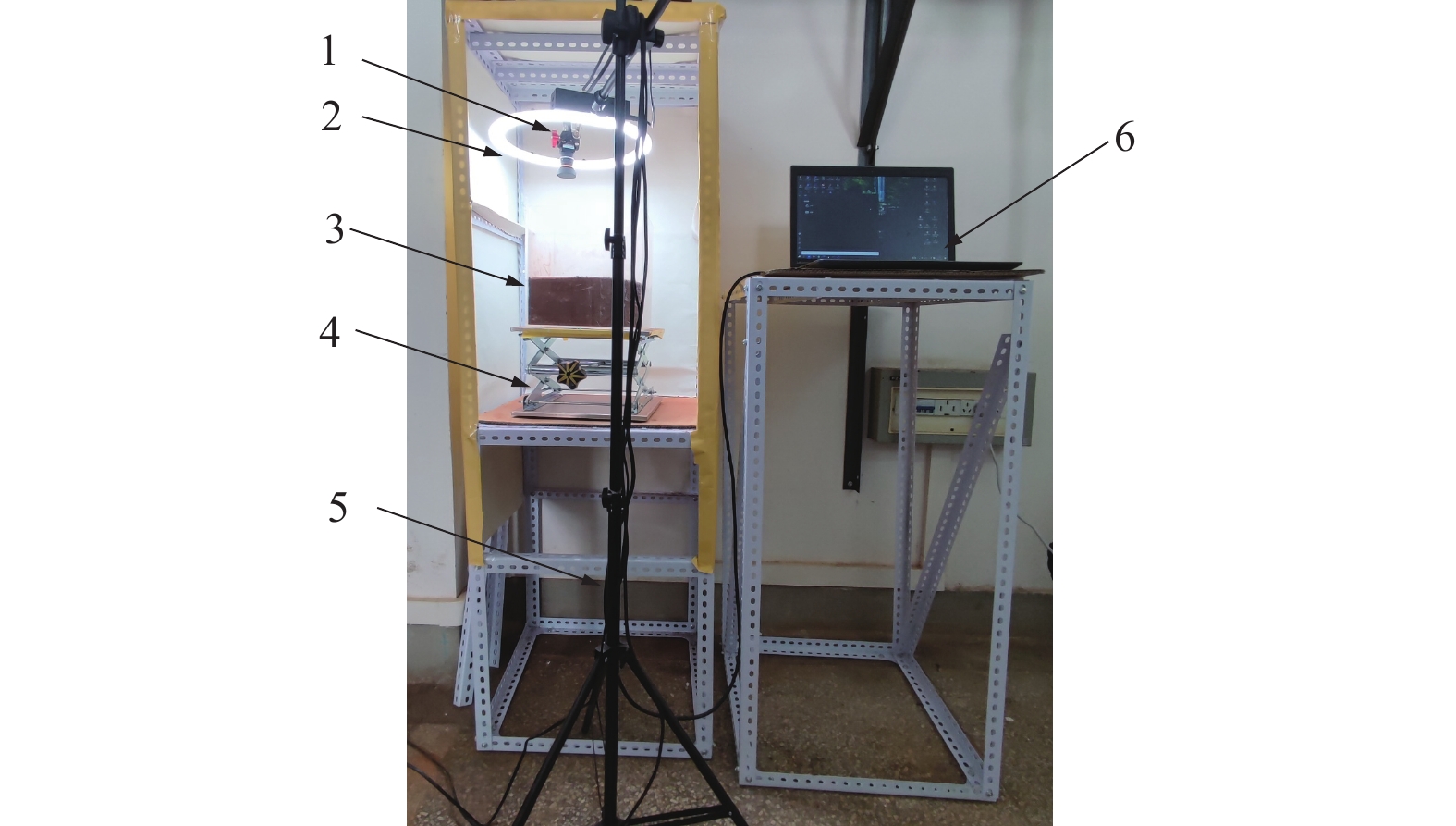
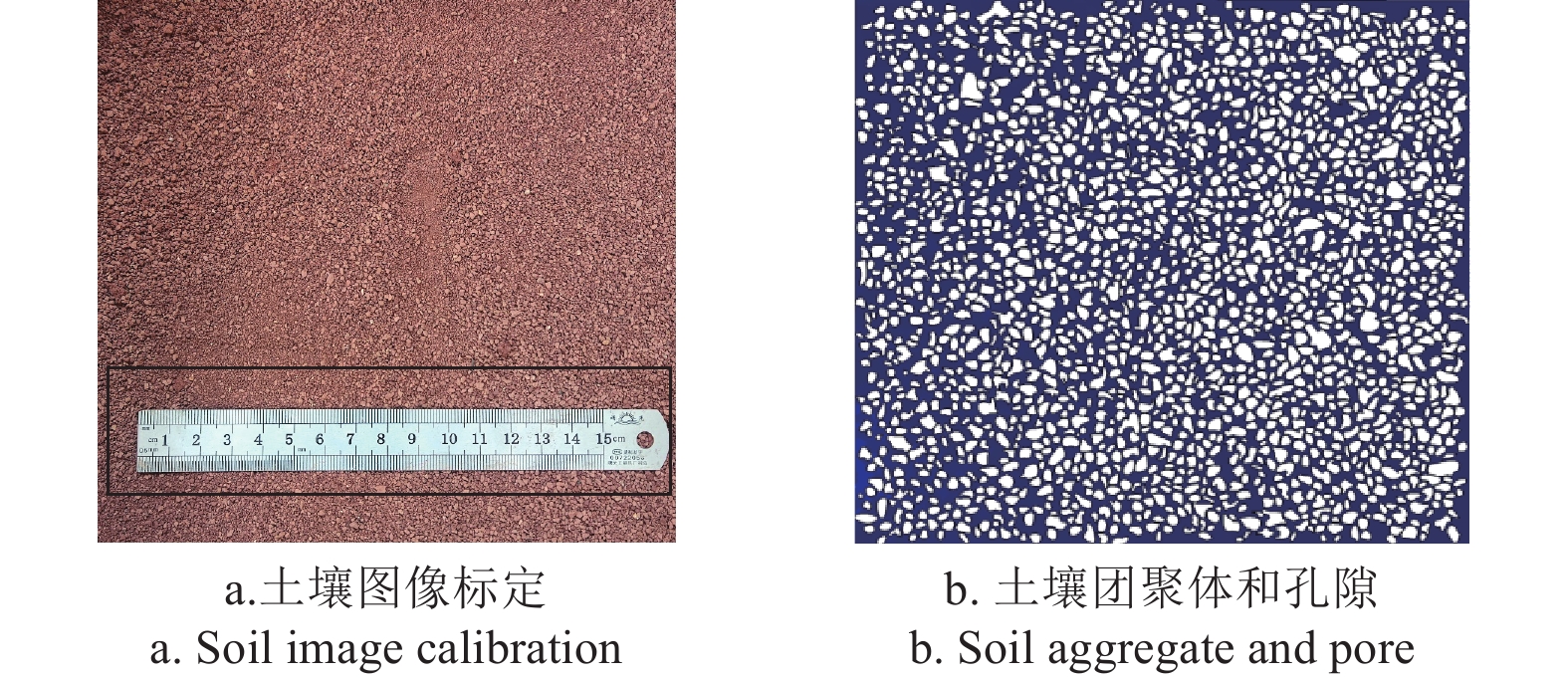


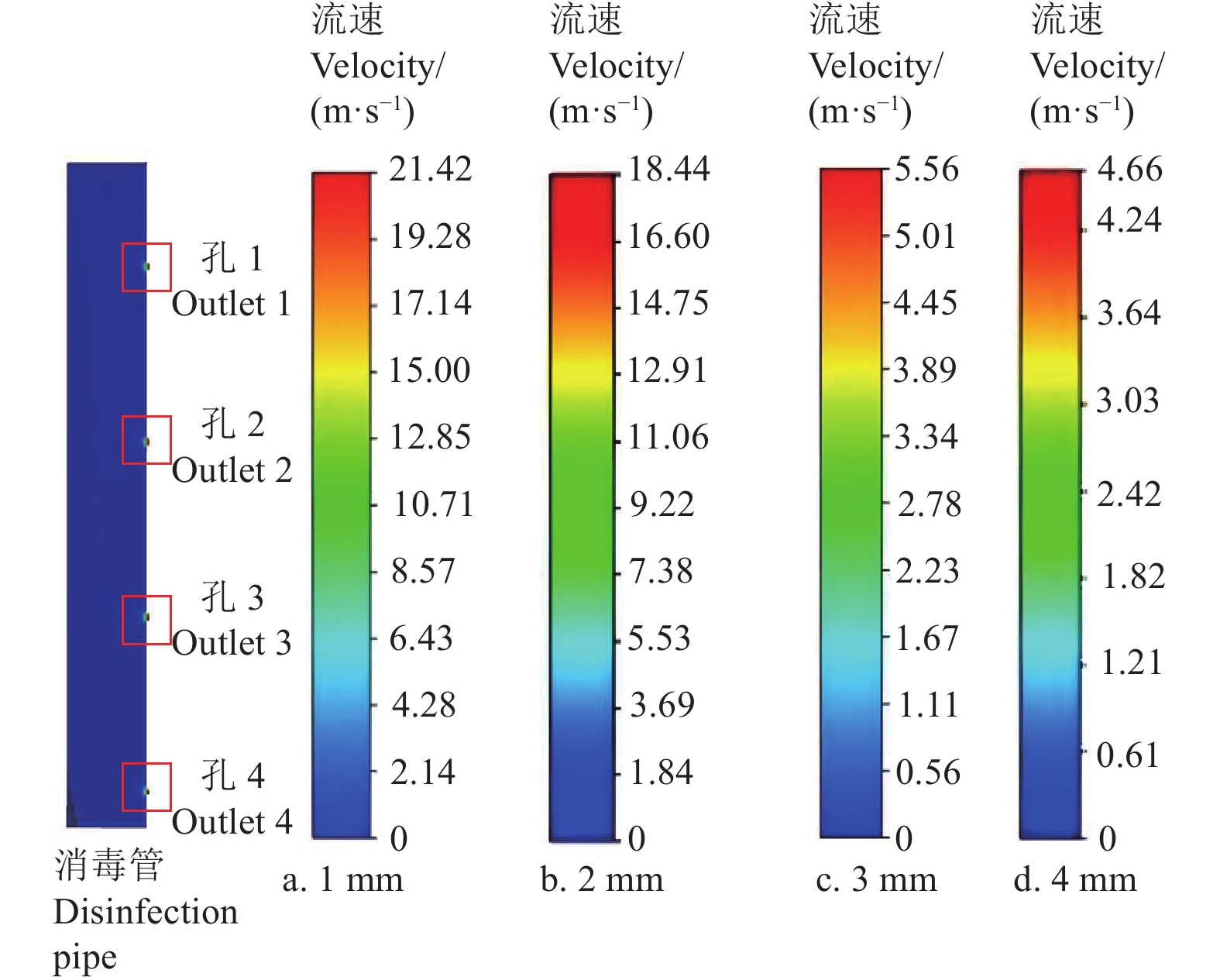
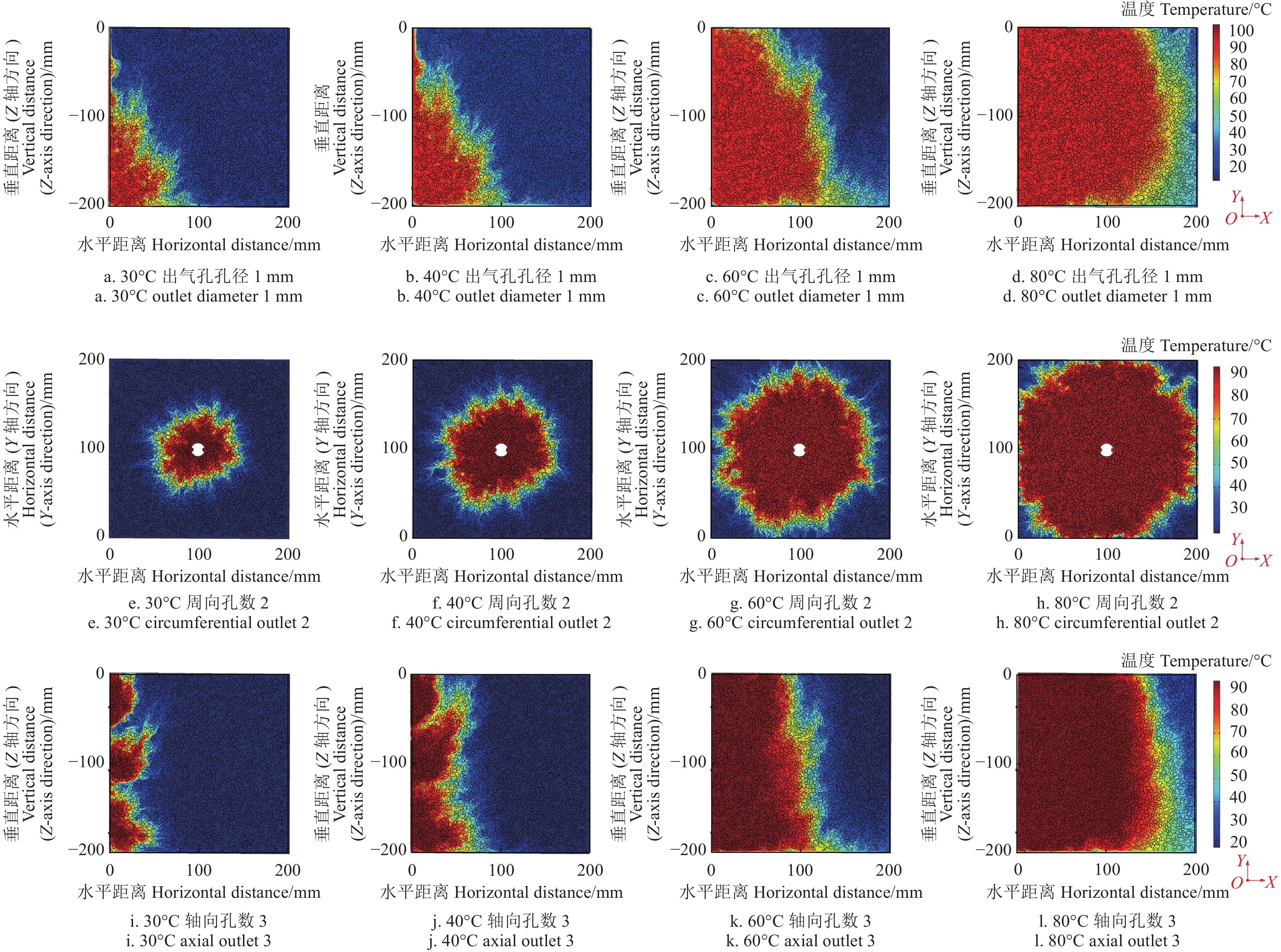
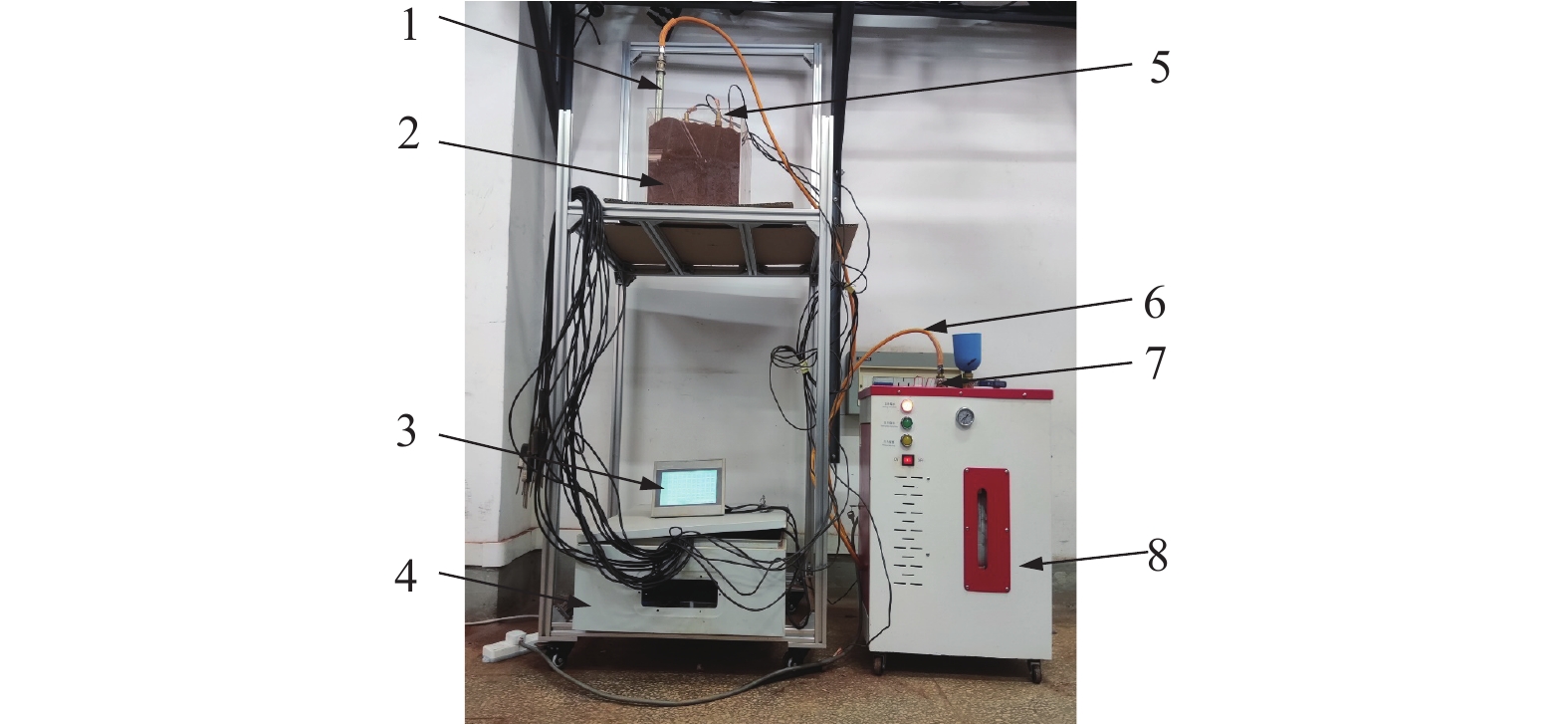
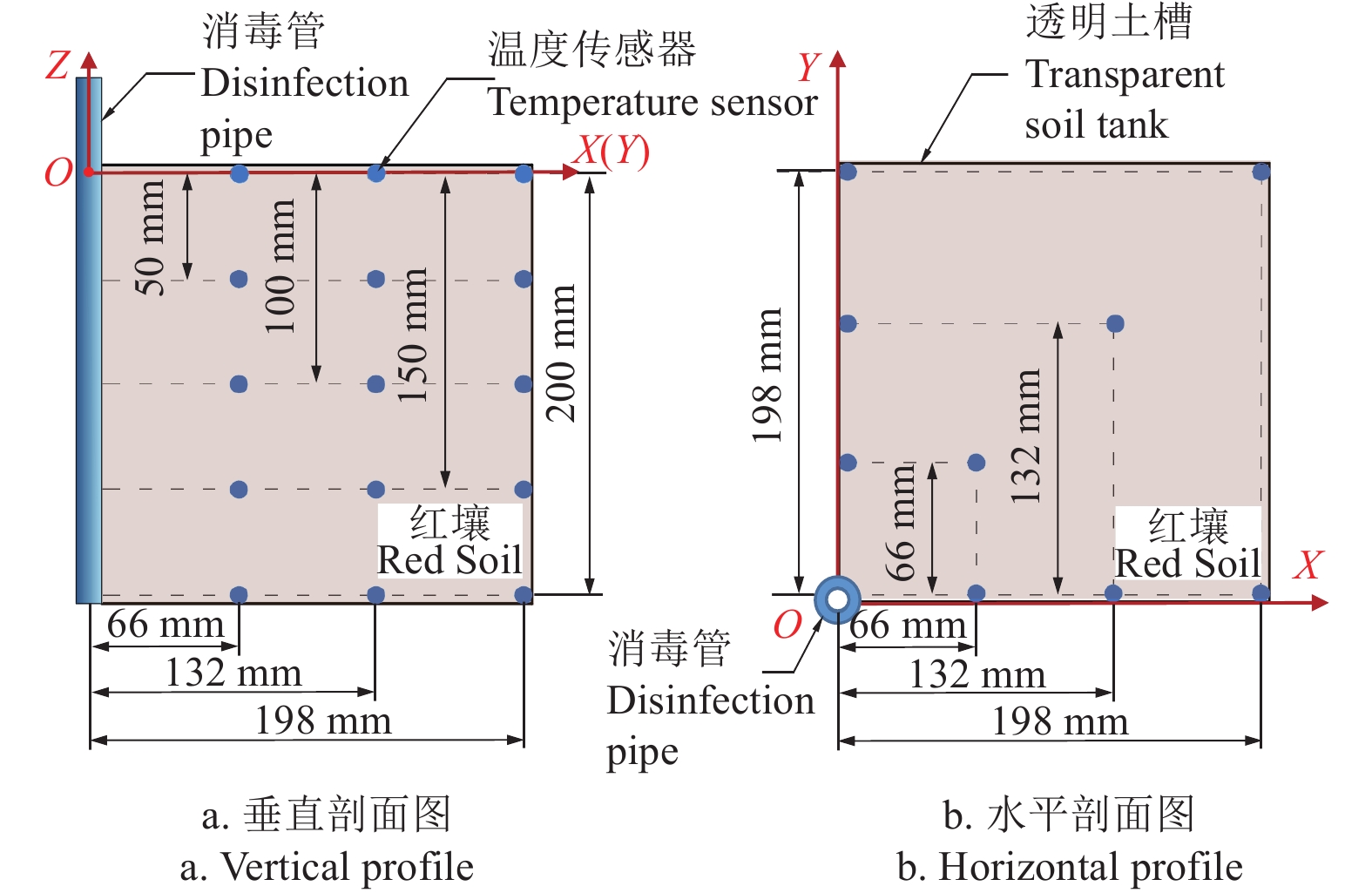

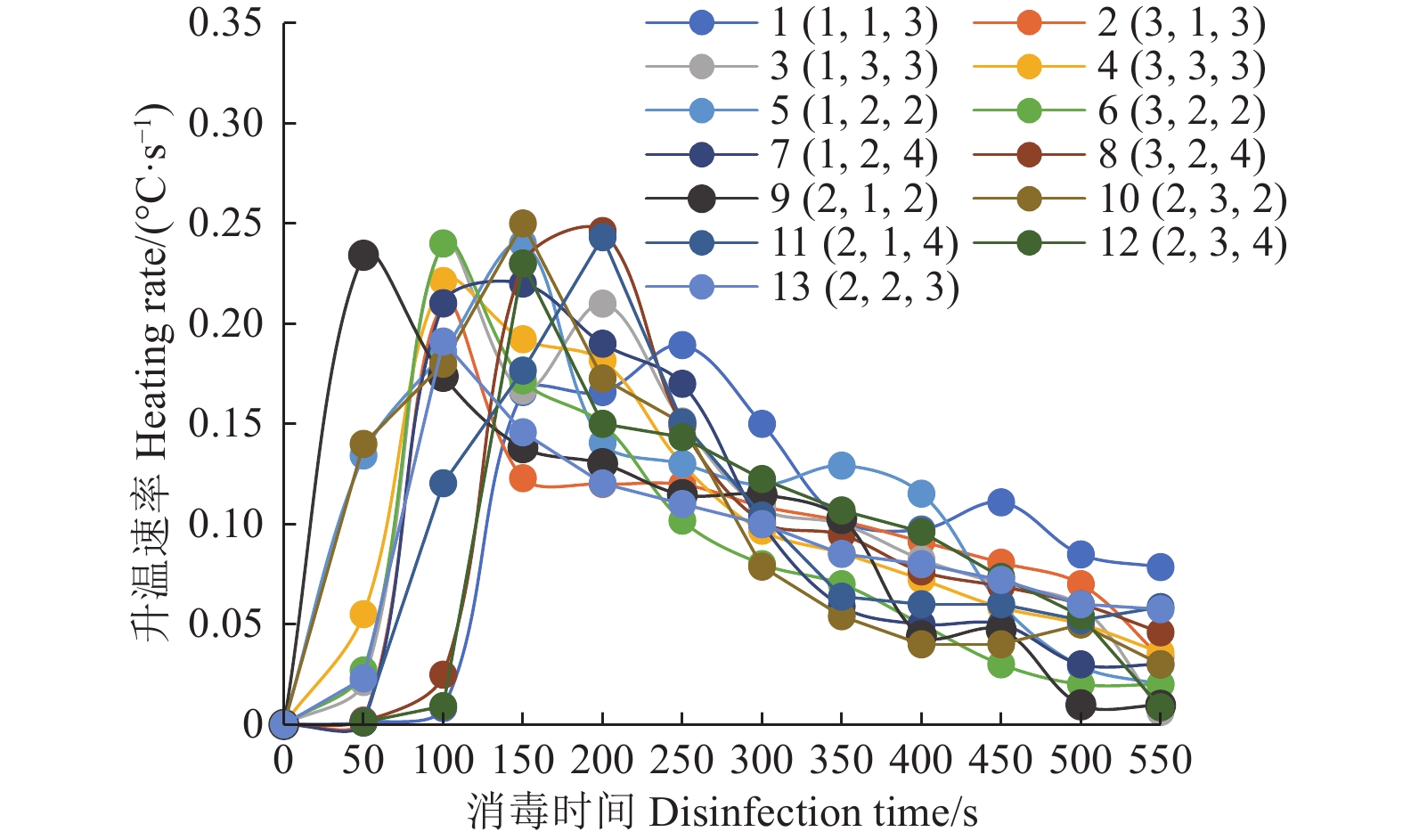
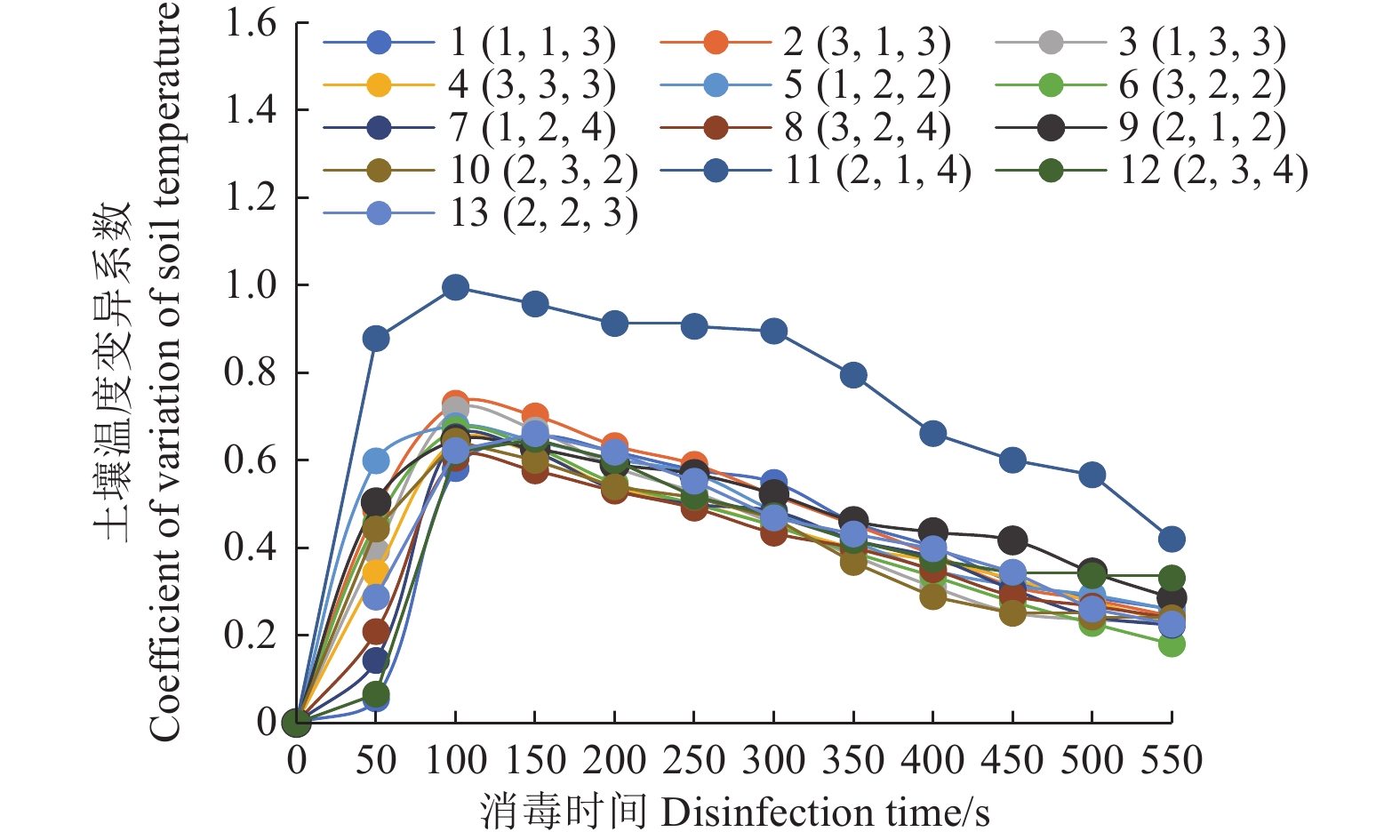
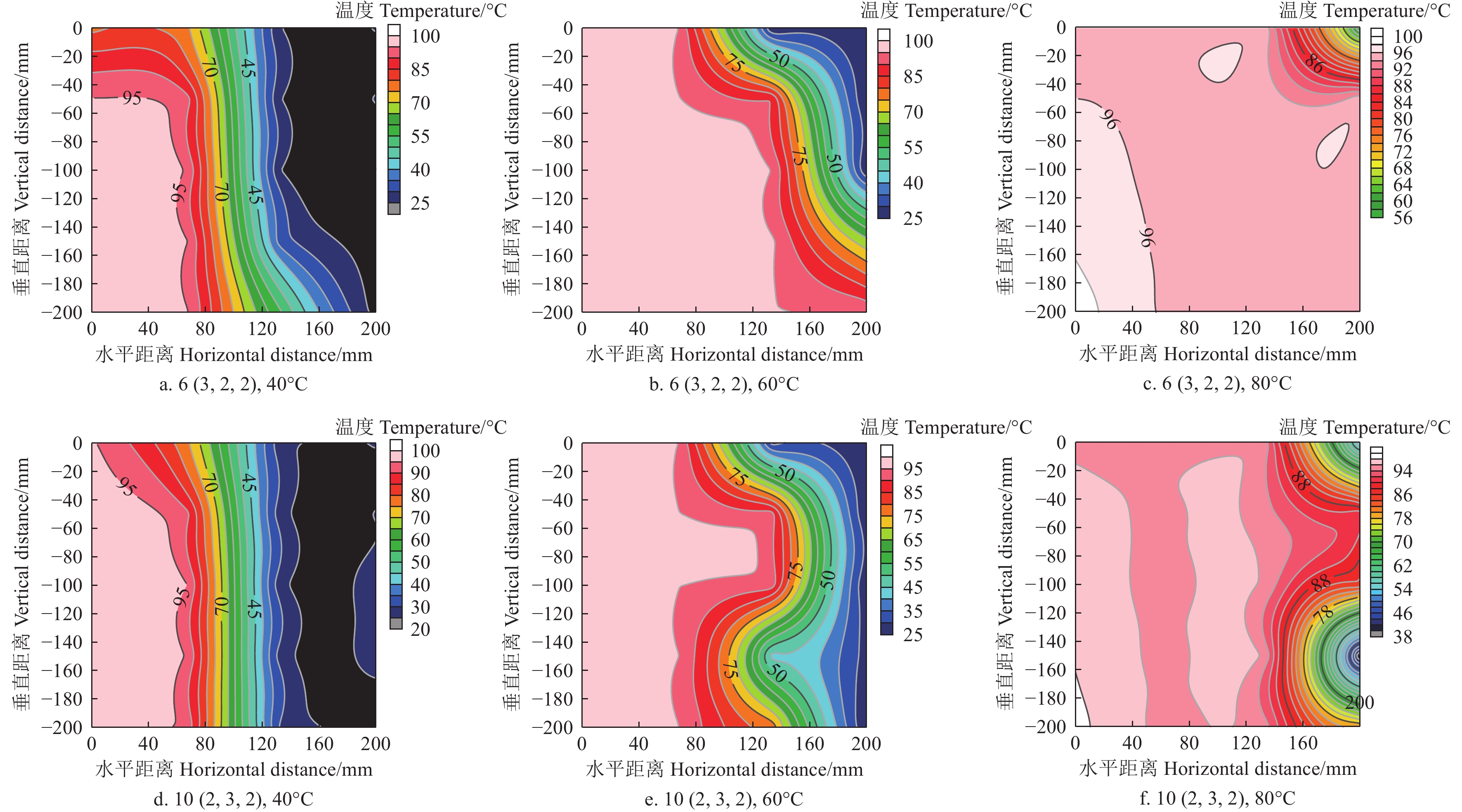
 下载:
下载:












